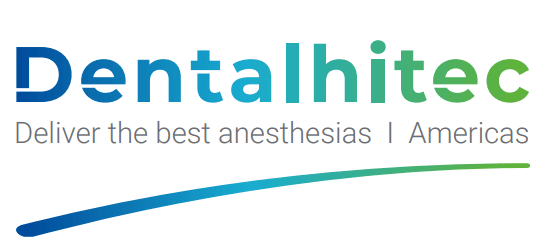Digital dental anesthesia
Digital dental anesthesia has seen remarkable development over the past 25 years, evolving from a promising technological innovation to a global benchmark in dental care. This progress has been marked by constant advances in precision, comfort and efficiency, thus meeting the growing expectations of patients and oral health professionals.
Continuous technological evolution for more than 25 years
Digital anesthesia began as an alternative to traditional injection methods, often perceived as uncomfortable and imprecise. For more than 25 years, Dentalhitec has invested in research and development to offer ever more efficient solutions. Today, SleeperOne, Soan or QuickSleeper allows electronically controlled administration, ensuring optimal delivery of the anesthetic and pain reduction for patients.
It is not only a product development but also a continuous effort and clinical studies demonstrating their effectiveness and superiority over conventional techniques. The growing adoption by dentists worldwide confirms the relevance of these solutions, making them a standard in modern practices.
The benefits for patients
One of the main advantages of digital anesthesia is to improve patient comfort. Thanks to a gradual and perfectly dosed injection, the sensation of pain and pressure is considerably reduced. This technology also reduces numbness in non-affected areas, avoiding post-intervention discomfort and allowing a quick return to daily activities.
In addition, digital anesthesia reduces anxiety among patients, especially those who fear needles and the unpleasant sensations associated with conventional injections. By offering a more gentle and predictable approach, It helps to improve the overall dental care experience and build patient confidence in their practitioner.
An evolution for dentists
For professionals, the adoption of digital anesthesia represents a significant gain in accuracy and safety. Modern devices allow for exact dosage of the anesthetic and total control of the injection rate, thus reducing the risk of intra-vascular injection or overdose. This precision optimises the effectiveness of interventions while limiting potential complications.
The ergonomics of the equipment is also a major advantage. Unlike traditional syringes that require sometimes uncomfortable manual pressure, digital anesthesia systems are designed for intuitive and effortless handling. This reduces the practitioner’s fatigue and improves their working comfort, especially during long or repetitive interventions.
An essential modernization
The adoption of digital anesthesia is not just a technical improvement; it represents an essential modernization of dental practice. By integrating this technology, dentists are enhancing their practice by providing their patients with more comfortable and better quality care. This is a strong differentiating argument, strengthening the reputation of the practitioner and promoting the retention of his or her patients.
Intraosseous anesthesia, the top of digital anesthesia
Thanks to the rotation of the needle offered by the QuickSleeper, dentists can pierce the maxillary or mandibular cortical and position the needle as close as possible to the apex. This rapid anaesthesia reduces pain and limits the volume of anaesthetic fluid required. You manage an anaesthesia of several teeth very quickly including on the mandibular molars (36/46).
